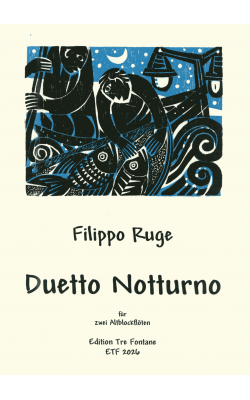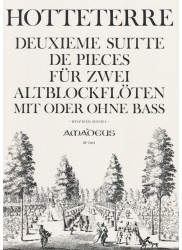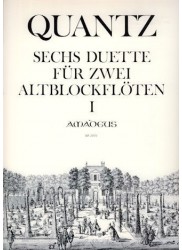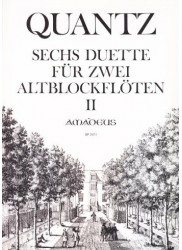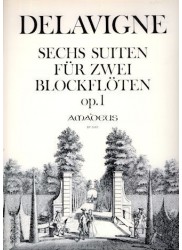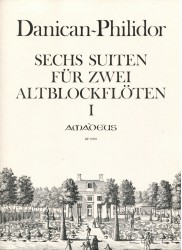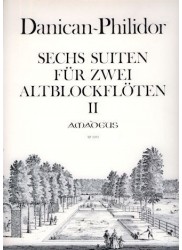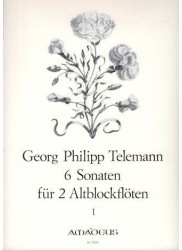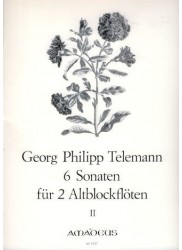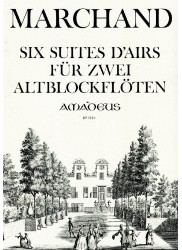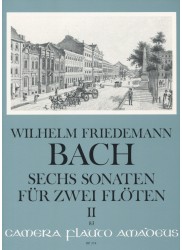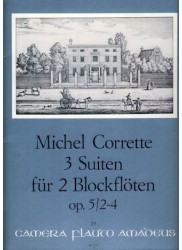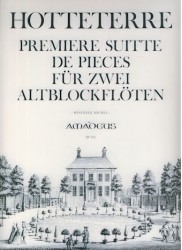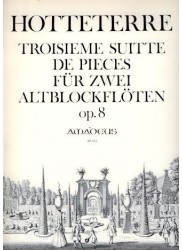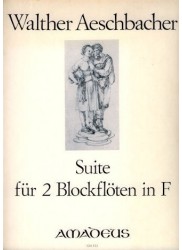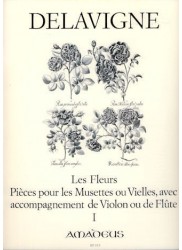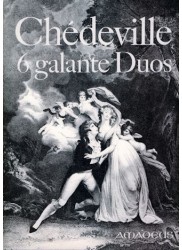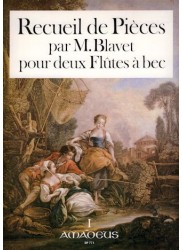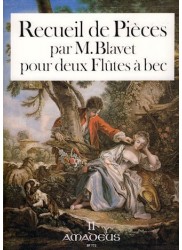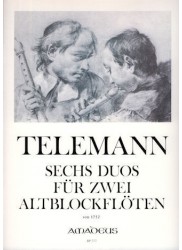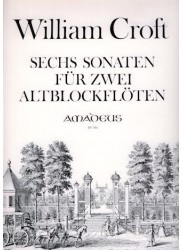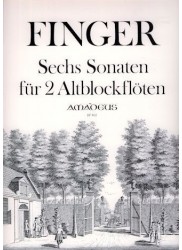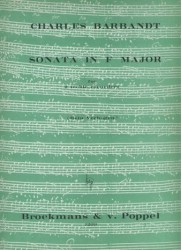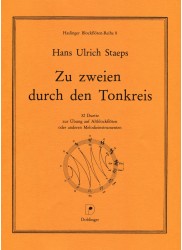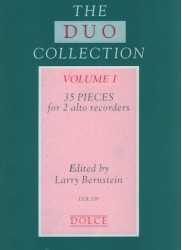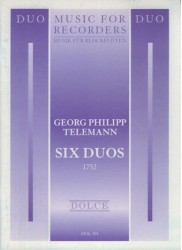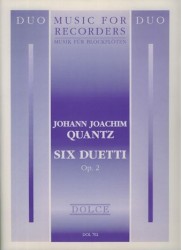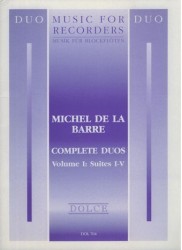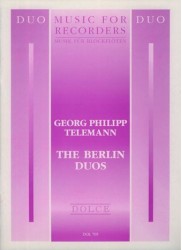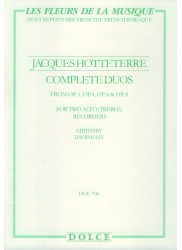No products
Prices are tax included
Duetto Notturno
Composer: Ruge - Filippo
Instrumentation: Tr - Tr
Period/Genre: Baroque/Classical
Grade: Difficult
More info
N o t t u r n o is the general name of such pieces of music that are intended to be performed at night, whether outdoors or in a room. Most commonly, this name is used to designate such three = four = or polyphonic instrumental pieces in which each part, as in the case of the sonata types, is only occupied once, but which make no claim to a firmly defined and sustained character, but where one only focuses on one content for the imagination or tonal painting intended for the ear.
Sometimes the name Not t u r n o is also given to such two = three = or four-part songs without instrumental accompaniment, which are intended for social singing at the evening table.
Heinrich Christoph Koch, Musical Lexicon 1802
Filippo Ruge (Ruge, Rugge, Ruggi, Ruggia, Rugi, Rouge) lived from around 1725 to after 1767. His origin is uncertain. The cash on delivery suggests a German descent, which is not proven. The suffix Ruge Romano, which sometimes appears in the prints of his works, may indicate that Ruge was of Roman origin and spent the first part of his life there. Nothing is known about his training, but he was probably not unknown in Rome as a flautist, which is proven by his membership in the Congregazione Santa Cecilia since 1744.
Between 1751 and 1754 he published five collections of chamber music for the first time with Walsh in London. Ruge may have stayed in London during this time before settling in Paris with his wife in 1753. The Paris press mentions Ruge for the first time in March 1753 on the occasion of a public appearance at the Concert Spirituel: "M. Rouge, Romain, a joué un Concerto de flute de sa composition” (Affiches de Province). In his apartment in Paris, Rue Plâtriere, he worked as a composer and teacher of the Italian style and together with his wife, a well-known singer, he organized house concerts there. Due to the possession of a large library of Italian compositions, with which he supplied not only his own but also the concert series at La Pouplinière (1754) and his preference for the Italian style, combined with Mannheim influences and the French descriptive style, he ended up in Paris in the middle of the Buffonist dispute. In 1755 Ruge's first French works were published and in 1756 his larger instrumental work "Sei sinfonie a quattro con corni ad lib" followed.
After 1761 Ruge no longer lived in Paris. A collection of 400 instrumental and vocal works (between 1750 and 1767) from the Château de Seignelay with about 40 compositions by Ruge and a catalog with Ruge's handwritten entries suggest that Ruge was in the service of the Marquis de Seignelay between 1757 and 1761 and lived in his castle. Ruge's last known work was printed in 1767. comment The "Duetto Notturno" was originally written for two transverse flutes and was transposed up a minor third to make it suitable for two recorders. In the first movement "Adagio staccato" the rests were added in bar 1/2 and bar 26/27, and in bar 85 the third crotchet voice in the second part d'' was corrected to c''. Broken slurs are the editor's addition.
Munster, March 2005
Heida Vissing
30 other products in the same category:
Reference: BP2064
Brand: Amadeus
Suite No 2, Op 6
Composer: Hotteterre - Jacques-Martin Arranger: Ed Winfried Michel...
In StockReference: BP2070
Brand: Amadeus
Six Duets Op 2 Vol 1
Composer: Quantz - Johann Joachim Arranger: Ed Bernhard Pauler...
In StockReference: BP2071
Brand: Amadeus
Six Duets Op 2 Vol 2
Composer: Quantz - Johann Joachim Arranger: Ed Bernhard Pauler...
In StockReference: BP2085
Brand: Amadeus
Six Suites Op 1
Composer: Delavigne - Philibert Arranger: Ed Winfried Michel...
In StockReference: BP2090
Brand: Amadeus
Six Suites Op Vol1
Composer: Danican-Philidor - Pierre Arranger: Ed Andreas Habert...
In StockReference: BP2091
Brand: Amadeus
Six Suites Volume 2
Composer: Danican-Philidor - Pierre Arranger: Ed Andreas Habert...
In StockReference: BP2426
Brand: Amadeus
Six Sonatas Volume 1
Composer: Telemann - Georg Philipp Arranger: Ed Winfried Michel...
In StockReference: BP2427
Brand: Amadeus
Six Sonatas Volume 2
Composer: Telemann - Georg Philipp Arranger: Ed Winfried Michel...
In StockReference: BP2530
Brand: Amadeus
Six Suites D'Airs
Composer: Marchand - Jean NoelArranger: Ed Yvonne MorganInstrumentation: 2...
In StockReference: BP374
Brand: Amadeus
Six Sonatas for Two Recorders Vol II
Composer: Bach - W.F.E. Arranger: Oskar Peter Instrumentation: 2 Trebles...
In StockReference: BP379
Brand: Amadeus
Three Suites Op5 Nos 2-4
Composer: Corrette - MichelInstrumentation: 2 TreblesPeriod/genre:...
In StockReference: BP392
Brand: Amadeus
Premiere Suite De Pieces No1 Op4
Composer: Hotteterre - Jacques-Martin Instrumentation: 2 Trebles...
In StockReference: BP422
Brand: Amadeus
Six Sonatas Op 6
Composer: Valentine - Robert Instrumentation: 2 Trebles Period/genre:...
Out of stockReference: BP432
Brand: Amadeus
Troisieme Suite De Pieces No3 Op8
Composer: Hotteterre - Jacques-Martin Instrumentation: 2 Trebles...
In StockReference: GM522
Brand: Amadeus
Suite for two Treble Recorders
Composer: Aeschbacher - Walther Instrumentation: 2 Trebles Period/genre:...
In StockReference: BP553
Brand: Amadeus
Les Fleurs Op4 Vol 1
Composer: Delavigne - Philibert Instrumentation: 2 Trebles Period/genre:...
Out of stockReference: BP770
Brand: Amadeus
Six Galant Duos Op5
Composer: Chedeville - Esprit-Philippe Arranger: Ed Bernhard Pauler...
In StockReference: BP771
Brand: Amadeus
Recueil de Pièces, Vol 1
Composer: Blavet - Michel Arranger: Yvonne Morgan & Winfried Michel...
In StockReference: BP772
Brand: Amadeus
Recueil de Pièces, Vol 2
Composer: Blavet - Michel Arranger: Ed Yvonne Morgan & Winfried Michel...
In StockReference: BP777
Brand: Amadeus
Six Duos for 2 Trebles from 1752
Composer: Telemann - Georg Philipp Arranger: Bernhard Pauler...
In StockReference: BP780
Brand: Amadeus
Six Sonatas
Composer: Croft - WilliamArranger: Ed Bernhard PaulerInstrumentation: 2...
In StockReference: BP802
Brand: Amadeus
Six Sonatas Op 2
Composer: Finger - Gottfried Arranger: Ed Yvonne Morgan Instrumentation: 2...
In StockReference: BRVP1209
Brand: Broekmans en van Poppel
Sonata in F Major
Composer: Barbandt - CharlesInstrumentation: 2 TreblesPeriod/genre:...
In StockReference: DOHBR8
Brand: Doblinger
Zu zweien durch den Tonkreis
Composer: Staeps - Hans Ulrich Instrumentation: 2 Trebles Period/genre:...
In StockReference: DOL109
Brand: Dolce
The Duo Collection Vol 1
Composer: Various Arranger: Larry Bernstein Instrumentation: 2 Trebles...
In StockReference: DOL701
Brand: Dolce
Six Duos (1752)
Composer: Telemann - Georg Philipp Arranger: Ed David Katz Instrumentation:...
In StockReference: DOL702
Brand: Dolce
Six Duetti Op 2 (1759)
Composer: Quantz - Johann Joachim Arranger: Ed Bernard Thomas...
In StockReference: DOL704E#
Brand: Dolce
Complete Duos, Vol 1
Composer: La Barre - Michel de Arranger: Ed David Katz Instrumentation: 2...
$27.50 -30%In StockReference: DOL705
Brand: Dolce
The Berlin Duos
Composer: Telemann - Georg PhilippArranger: Ed David KatzInstrumentation: 2...
Out of stockReference: DOL706
Brand: Dolce
Complete Duos
Composer: Hotteterre - Jacques-Martin Arranger: Ed David Katz...
In Stock

